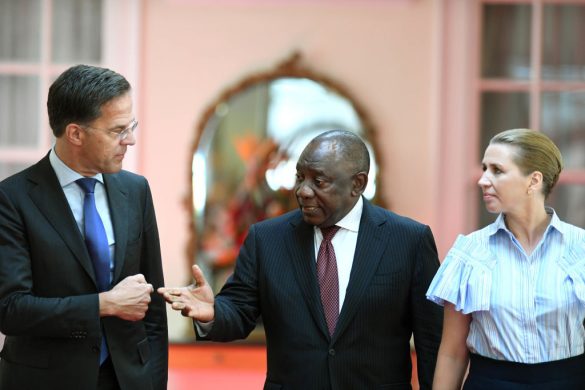Sydafrikas Kruger nationalpark mod grænsen til Mozambique er så truet af krybskytter, at parkforvaltningen nu er begyndt at flytte de truede tykhuder til en særlg beskyttet zone dybere inde i parken, der er på størrelse med Jylland og svær at bevogte.
NEW YORK, 3. December 2014 (CNN): A special team has already conducted more than 30 relocations since last month (November), and will conduct hundreds more.
They are a key part of a protection plan which has taken on even greater urgency since the country’s environmental minister announced that a record 1,020 of South Africa’s rhinos have been killed this year by poachers.
The illegal trade in rhino horn is fueled by an insatiable (umættelig) demand in Asia, where it is prized as a sign of wealth and believed to have medicinal value — though there’s no scientific evidence to support claims that it has healing properties.
Rhino horn is made of keratin, the same protein found in human fingernails, but it can still fetch as much as 5,550 US dolllar an ounce (en kilopris på flere hundrede tusind kr., red.) on the black market — that is more than the price of gold, more than the price of platinum — and roughly equivalent to the price of cocaine.
“Vi er i krig”
Kruger National Park, which is home to roughly 10,000 rhinos – a quarter of the world’s population – shares a 350-kilometer border with impoverished Mozambique, making it a massive target for poachers.
“We were rangers, now we are at war,” the park’s head of anti-poaching, Major General Johan Jooste, told CNN.
The general says his enemy has a nearly limitless supply of foot soldiers ready to cross the border and risk it all for small slice of the profit: last month alone, 600 poachers infiltrated the park from Mozambique.
“Once a poacher is in the park, it is like a burglar in your home,” said Jooste, who admitted that military-style patrols alone will never be enough to save Kruger’s rhinos, and that much more needs to be done outside the park’s boundaries.
The new intensive protection zones will at least give his rangers the chance to establish what the general calls sanctuaries within a sanctuary.
There was a time when this park had no rhinos at all. Several relocations, including one from 1960 to 1972 that introduced 300 rhinos, helped grow Kruger’s population, which reached its peak of 12,200 rhinos in 2010.
Afrikas sidste næsehorn
I Afrikas som helhed er der omkring 18.000 bredsnudede (hvide) og græsædende næsehorn tilbage og 3.000 spidssnudede (sorte) og bladædende næsehorn.
Især det sorte næsehorn kæmper for overlevelse i stater ofte uden en effektiv parkforvaltning. Således blev den vestafrikanske underart af sort næsehorn officielt erklæret for uddød i november i år.
Den havde reelt ikke en chance i verdens fattigste og mest urolige region.














